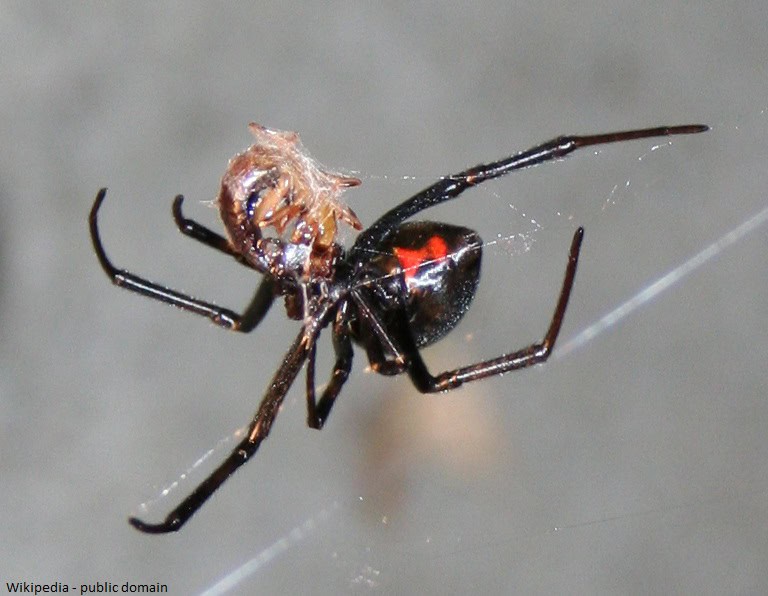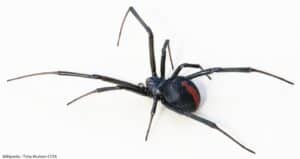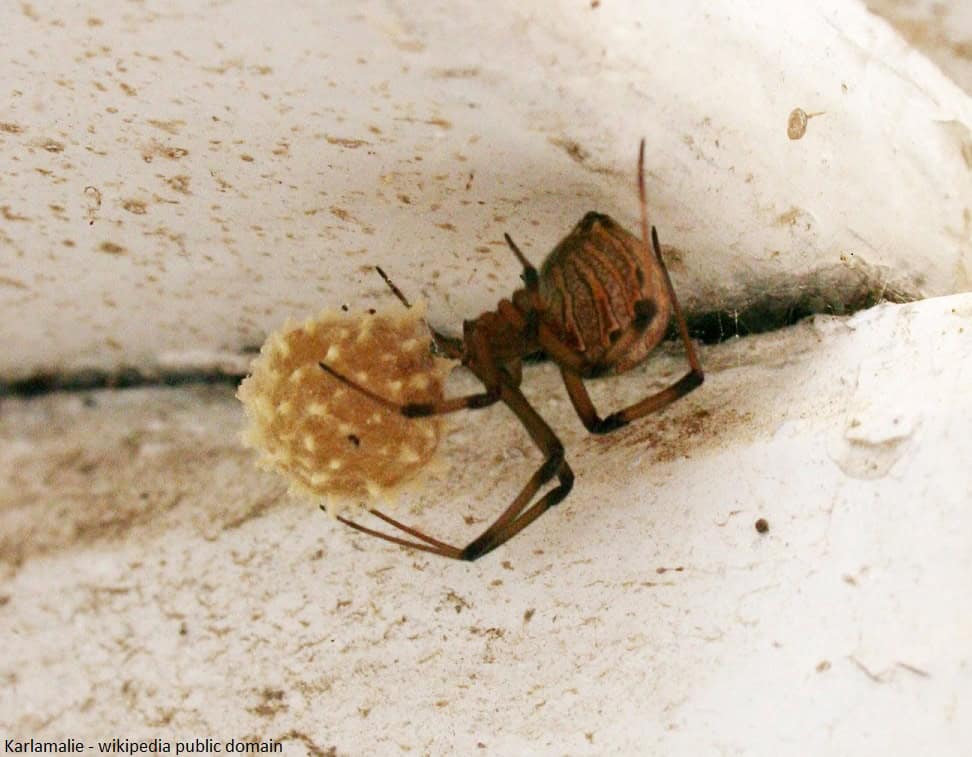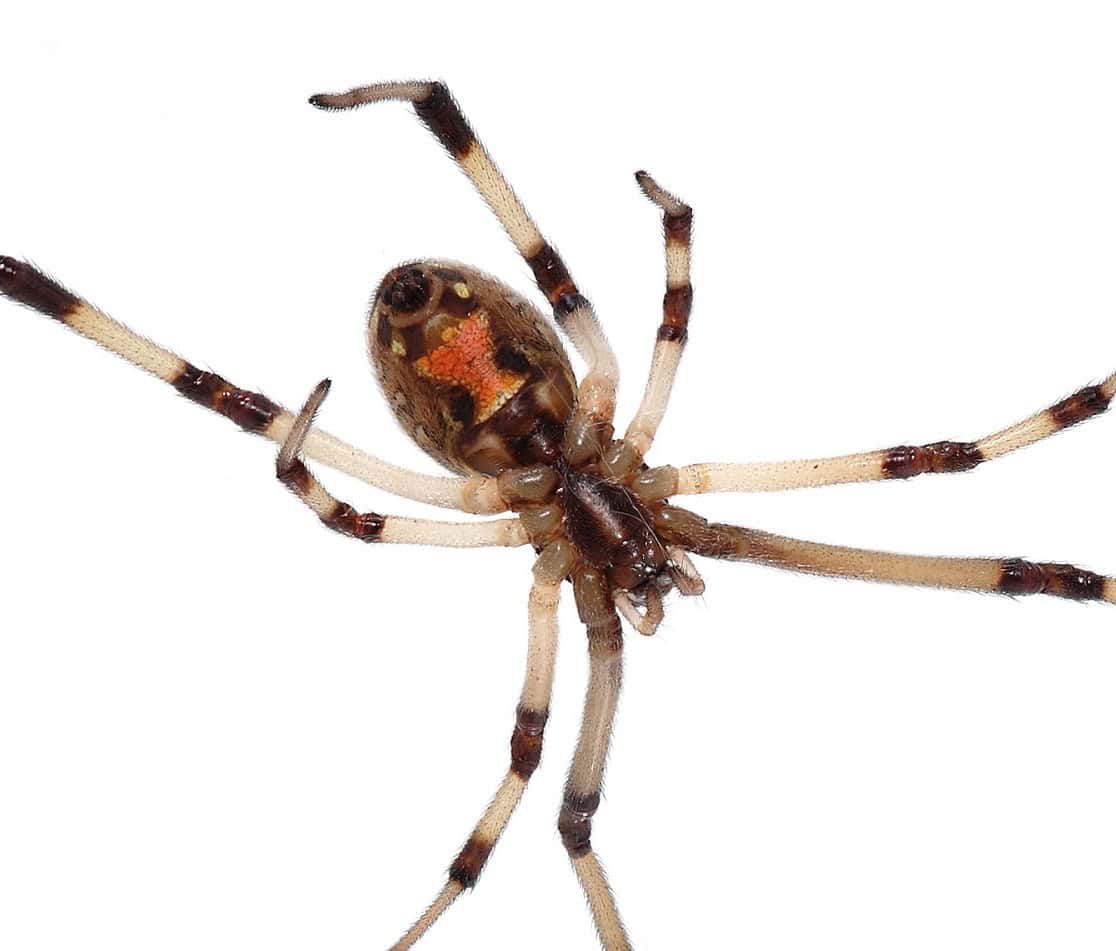Widow spiders are of the genus Latrodectus, feared by cultures worldwide because of their venomous bites, especially the black widow (the brown widow’s bite has milder symptoms). Because they are so feared, it doesn’t help most people to know that black and brown widows are non-aggressive. Widows will instinctively bite if they become trapped next to one’s skin, causing severe pain and suffering.

The Black Widow
In North America, female black widows have a shiny, black bulbous body, with a red spot shaped like an hourglass underneath their abdomens. Black widows are found throughout the United States but predominately in the southern and western states. In size, they can be up to an inch and a half (including the legs). Some black widows in other countries have a red stripe on top of their abdomens and no hourglass, such as the Australian widow spider called the “Redback.???

The black widow is named “widow??? because of its propensity to sexual cannibalism. Some widow species consume the male after mating; however, most studies have been conducted in labs in which the males could not get away. Research at the University of Hamburg, Germany, indicates the widows that do eat their mates do so in an effort to increase the survival rate of their offspring. Males find it hard to defend themselves against female black widows since the female’s venom is three times as strong as the male’s.
The Brown Widow
The brown widow female spider is similar to the black widow but less dangerous and a little smaller in size. She has a pattern of brown and tan stripes; and instead of a red hourglass on her underbelly, she has an orange-colored one. The brown widow’s egg sac can be identified easily by her egg case which is covered with lots of silk spikes sticking out of it.

Brown widow spiders are an invasive species to North America. Researchers believe brown widows originated in South Africa, although older specimens have been found in both South Africa and South America.
Widow Spider Behavior and Habitat
Black and brown widow spiders make messy webs called theridiid webs – sticky, tangled cobwebs in which to catch their prey. Both prefer building their webs and laying eggs in undisturbed areas; sheds, garages, wood and rock piles, under patio furniture, eaves, and other outdoor structures. Indoors, they hide in cluttered areas like garages, in and behind boxes, in corners of rooms and in closets.
One way widow spiders travel from house to house and even city to city is through what is called “ballooning.” After spending a short time with their widow mothers, young spiderlings will set off on their own into new territory by using the ballooning method. On warm days when there’s a breeze in the air, small spiderlings climb to high points of fence posts or plants and stick their abdomens up in the air to release a small amount of silk. If the air current is stronger than the weight of the spider, the spiderling becomes airborne and is carried away, sometimes for miles. Ballooning spiders have been found as high as 10,000 ft. and on ships, 200 miles offshore!

Pest Control of Widow Spiders
Black and brown widows eat a variety of insects and can be controlled by treating their food source – either with traditional pesticides or organic methods. It’s important to web dust frequently, especially during summer. Spiders are solitary and like to hide in dark, undisturbed places. Females not only produce about 300 eggs per sac, they can store sperm to create up to 10 egg sacs over several months, that’s 3000 spiderlings!
Precautionary Measures
Here are some tips for preventing widow bites:
- When working in a garage or storage area, wear long-sleeved shirts, gloves and even a hat. Avoid sandals and wear boots or tennis shoes.
- Once fall arrives and it’s time to bring out your stylish winter boots, shake them out before putting them on. Same goes with clothes and jackets. (Not to scare you but there’s a story about a person who tried on a jacket at a garment district – discounted clothes brought in from other countries, and when this unfortunate individual put his hands in the pockets, he was bitten by a very poisonous spider that had hijacked itself into the states via the jacket………). Shaking clothes, boots, and hats on a regular basis, before you put them on, is always a good idea.
- Cleaning out woodpiles, handling lumber or moving rocks in the landscape should be done wearing gloves, long-sleeved shirts, and boots.
NOTE: The bite of a female black widow is dangerous and full of toxic venom poisonous to humans. The following is for information only and not for use in the treatment or management of an actual poison exposure – If you have an exposure, you should call your local emergency number (such as 911) or the National Poison Control Center at 1-800-222-1222.
Call today at 1-800-986-1006 for help with a spider infestation. You’re also welcome to complete our contact form and a caring Hearts Pest Management representative will contact you shortly.
References
Mallis, Handbook of Pest Control, Tenth Edition, Saunders College Publishing, 2011
Wikipedia – Widow Spiders and Recluse Spiders
